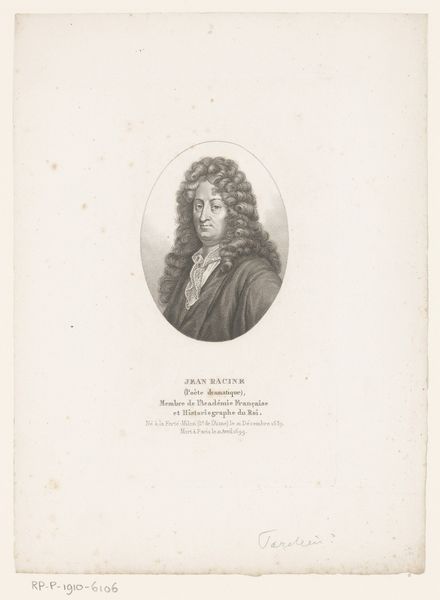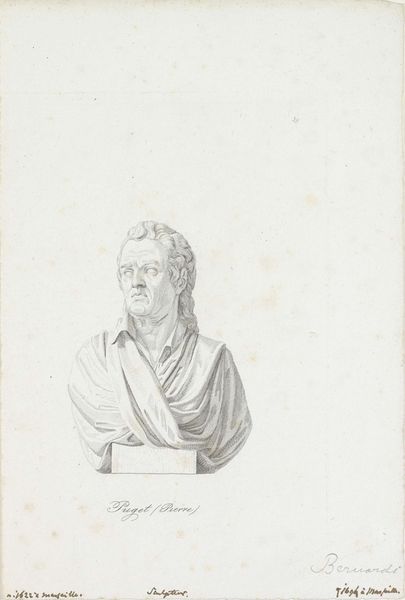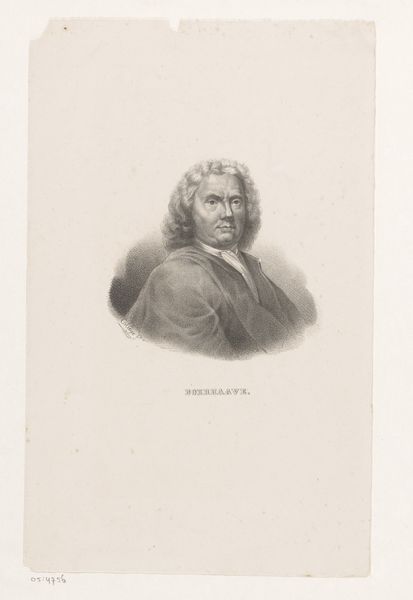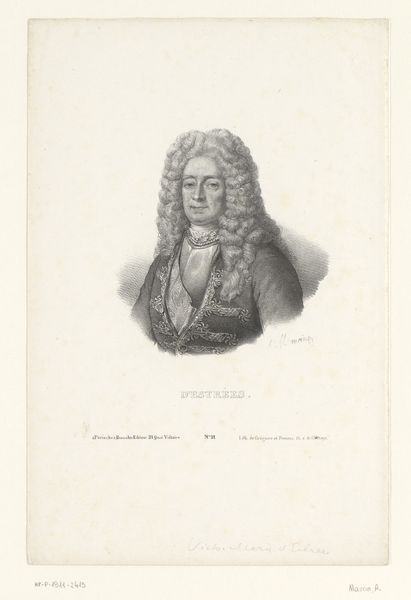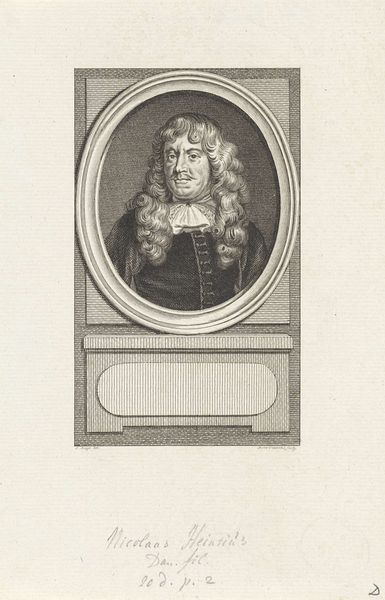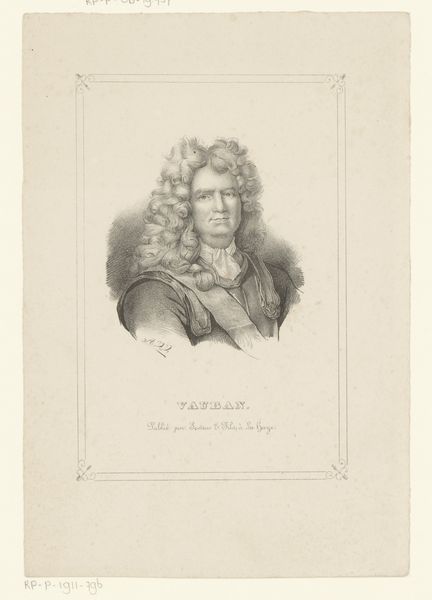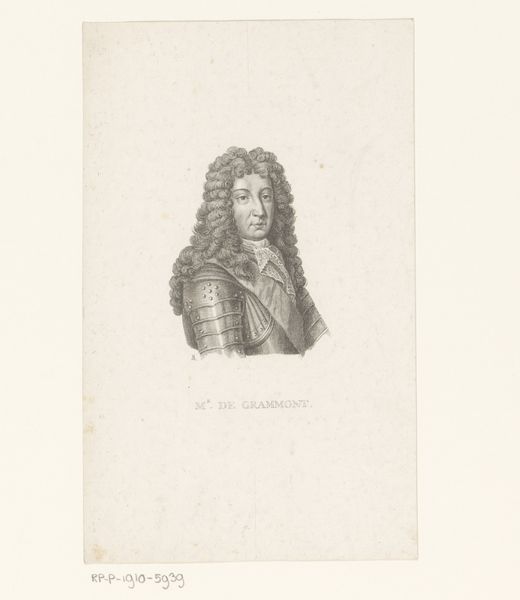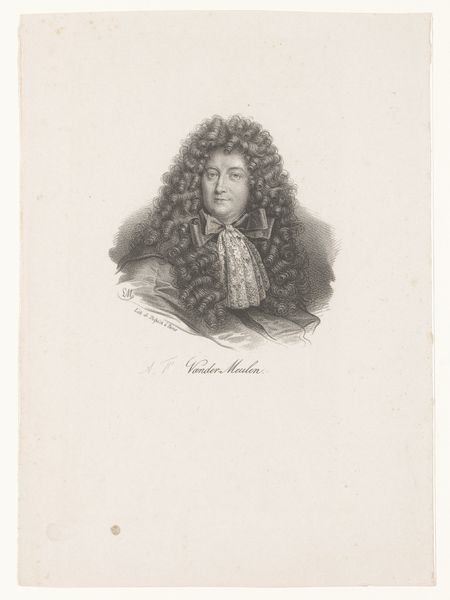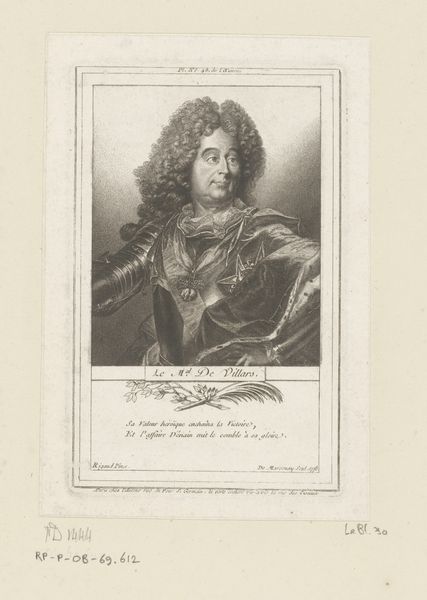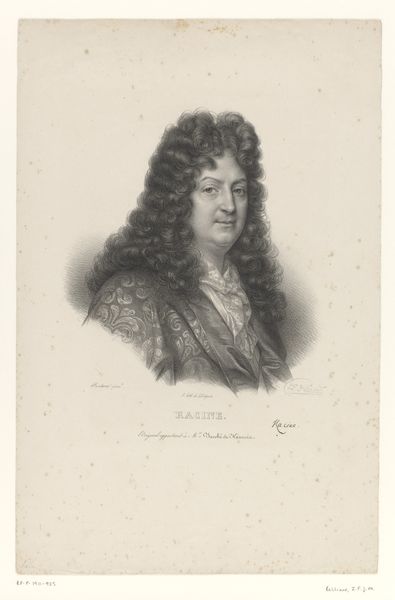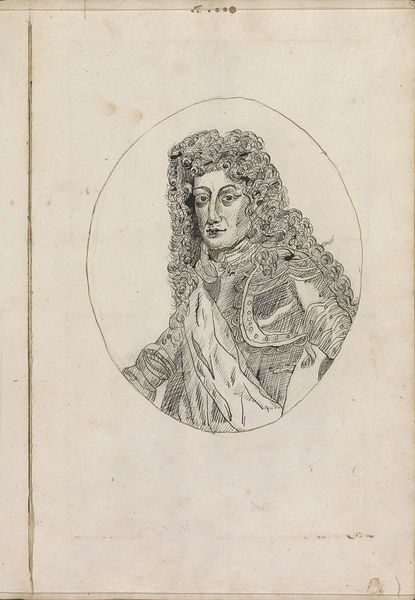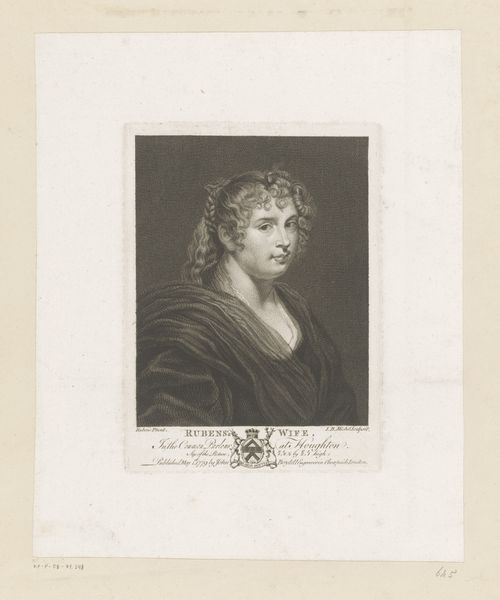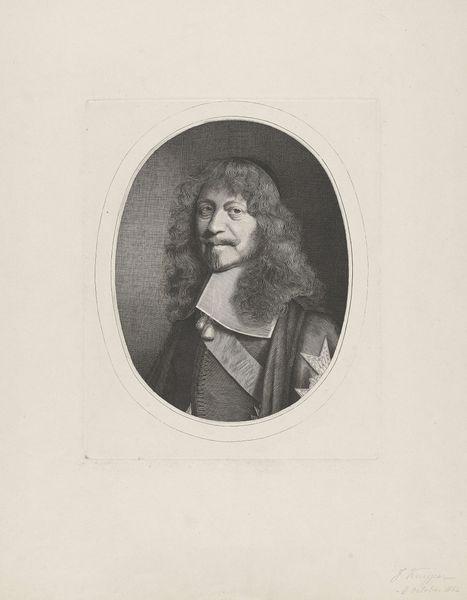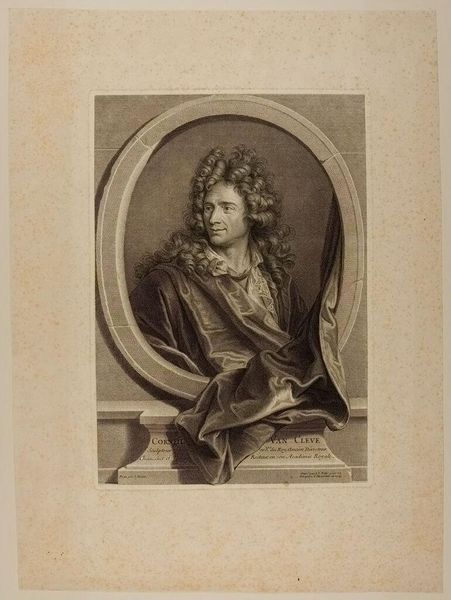
drawing, pencil, graphite
#
portrait
#
pencil drawn
#
drawing
#
pencil sketch
#
figuration
#
pencil
#
graphite
Dimensions: height 242 mm, width 165 mm
Copyright: Rijks Museum: Open Domain
Curator: I'm immediately struck by the vulnerability in this bust. It feels so intimate, so sketched and soft, like a half-remembered dream. Editor: That’s a sensitive reading! This drawing, dated sometime between 1818 and 1848, is called "Portretbuste van prentmaker Claude Perrault" or "Portrait Bust of Printmaker Claude Perrault" by Jacopo Bernardi. It's rendered in pencil and graphite on paper, portraying its subject in elegant yet simple terms. Curator: The artist has chosen the graphite perfectly, though; see how it lends itself to those ethereal curls of hair and the soft drape of fabric. You almost expect it to flutter off the page. But what statement is it trying to make by highlighting the curls so vividly? Editor: In a time when printed images were circulating widely, a portrait of a printmaker like Claude Perrault becomes an interesting commentary on image-making itself. Perhaps Bernardi seeks to ennoble Perrault, representing a talented artist during his time and his status. Curator: Hmmm... it certainly elevates the man to art, but I still feel the gentleness behind the image. Even with that stone cold demeanor! Was Perrault's art as thoughtful and delicate, or is Bernardi imposing his sensitivities? I am very drawn to the details along the jawline and the suggestion of something wise behind the eyes. Editor: These portraits played a critical role, reinforcing ideals about status and character within a particular social framework. Bernardi may have wanted to demonstrate his command over his pencil and ability to make the subject look handsome or powerful, which often translated into commissions from upper members of society. Curator: Yes, art often ends up becoming a mirror, doesn’t it? Reflecting not only the subject but also the ambitions of its own age. Editor: Indeed. Reflecting the artist, the subject, and the values of the culture in which it was created and received. Each line tells a story, consciously or otherwise.
Comments
No comments
Be the first to comment and join the conversation on the ultimate creative platform.
